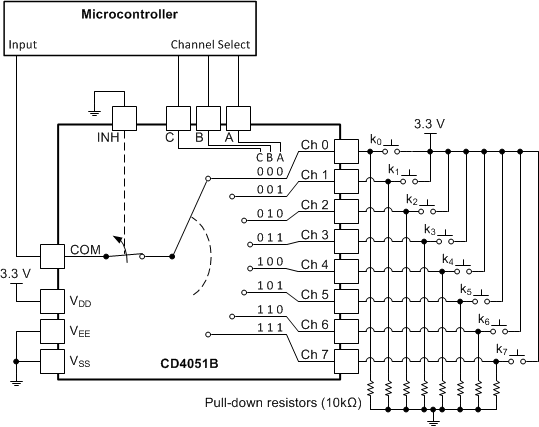SCHS047M August 1998 – November 2024 CD4051B , CD4052B , CD4053B
PRODUCTION DATA
- 1
- 1 Features
- 2 Applications
- 3 Description
- 4 Pin Configuration and Functions
- 5 Specifications
- 6 Parameter Measurement Information
- 7 Detailed Description
- 8 Application and Implementation
- 9 Device and Documentation Support
- 10Revision History
- 11Mechanical, Packaging, and Orderable Information
Package Options
Mechanical Data (Package|Pins)
- J|16
Thermal pad, mechanical data (Package|Pins)
Orderable Information
8.2 Typical Application
One application of the CD4051B is to use it in conjunction with a microcontroller to poll a keypad. Figure 8-1 shows the basic schematic for such a polling system. The microcontroller uses the channel select pins to cycle through the different channels while reading the input to see if a user is pressing any of the keys. This application is a very robust setup, allowing for multiple simultaneous key-presses with very little power consumption. This setup also uses very few pins on the microcontroller. The down side of polling is that the microcontroller must continually scan the keys for a press and can do little else during this process.
 Figure 8-1 The CD4051B Being Used to Help Read
Button Presses on a Keypad
Figure 8-1 The CD4051B Being Used to Help Read
Button Presses on a Keypad